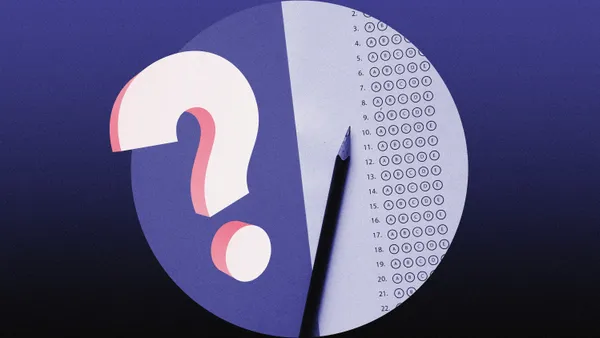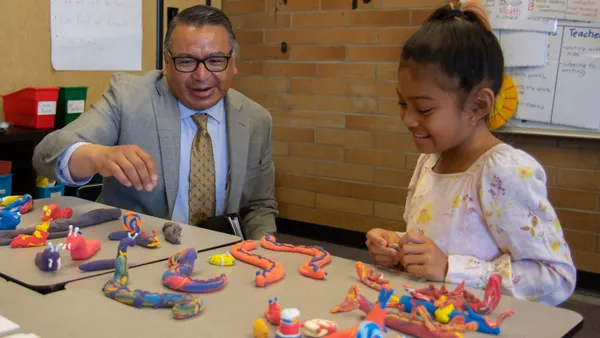Dive Brief:
- Most K-12 teachers (81%) require a textbook for their classrooms, with 20% only providing print textbooks and 20% just using digital textbooks, according to a survey conducted by Bay View Analytics, a statistical research firm.
- The firm's sixth annual survey of teachers also showed growing awareness and adoption of digital materials and open educational resources. About a third of teachers were aware of OER, showing a small increase from previous years.
- The survey results reveal that even five years after schools temporarily pivoted to online learning during the COVID-19 pandemic, both print and digital classroom materials are still prominently used in classrooms.
Dive Insight:
Teachers have mixed satisfaction with classroom materials, giving the majority of materials good to passable grades with no difference based on the format used.
Overall, the survey results show there is room for improvement, said Julia Seaman, research director at Bay View Analytics and co-author of a report with the survey findings, in a statement.
For example, while teachers marked overall curricula with a 73% satisfaction rating, they gave an average satisfaction rating of 70% for their curricula's flexibility to meet their needs. That could indicate concerns about adaptability and usability, the report said.
Although 88% of teachers said they "agree" or "somewhat agree" that the instructional materials they use are effective for teaching students, a smaller portion — 79% — agree or somewhat agree the materials are engaging for students.
Regarding OER, adoption is growing — but slowly, the research found. Open educational resources are typically available in digital formats and are free or very low-cost. Many OER materials are created and shared by educators.
The percentage of K-12 teachers "very aware," "aware" or "somewhat aware" of OER was 36% in the 2024-25 school year, up from 32% the previous year. Teachers at the high school level reported being more aware of OER (46%), and pre-K-3 teachers were the least aware (22%).
"OER materials are a digital material that has shown consistent growth in K-12 for both awareness and adoption. Teachers enjoy the flexibility of the open license to customize it for their class content and student needs," Seaman said.
The report is based on survey data from 1,137 teachers in the U.S. The survey was conducted in April 2025.






 Dive Awards
Dive Awards








